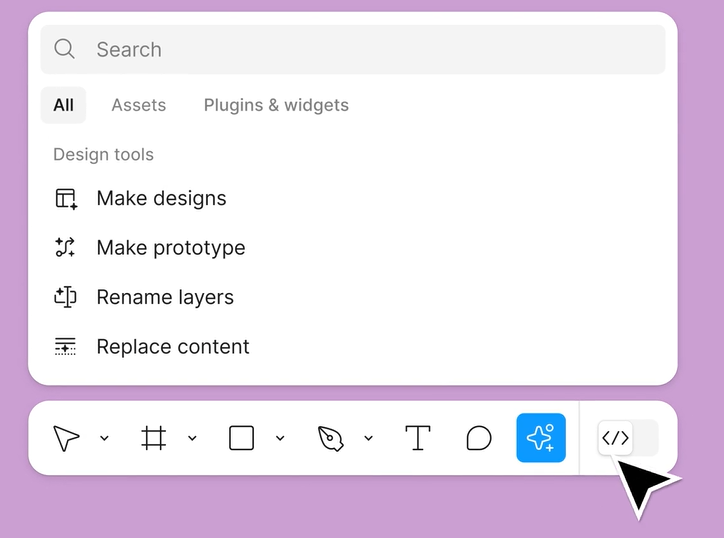Generative AI appears to be scaling lookalikes at a rapid clip and the big unknown is how long originality will last.
Figma's Make Designs feature is the latest example of how generative AI models and the guardrails that govern them are going to have weight how much they can crib from existing designs. When does "inspiration" become a blatant copy of something?
As a quick recap, Figma launched Make Designs, a feature that can create apps on the fly. Andy Allen, CEO of Not Boring Software, highlighted on X how Figma's Make Designs tool replicas of Apple's weather app. I'd argue that the Figma Make Designs creations looked like the weather apps you'd find everywhere. Honestly, most Web designs and apps all look alike today. GenAI is just going to scale copycats even more.
Figma CEO Dylan Field responded to Allen's take in a thread that noted that the company used off-the-shelf models, notably OpenAI, and that the issue was variability. Figma didn't have enough data to create more original designs.
Field wrote:
"How does Make Design work? As we have explained publicly, the feature uses off-the-shelf LLMs, combined with design systems we commissioned to be used by these models. The problem with this approach — which I outlined in my keynote last week — is that variability is too low."
The upshot to Field's response is that generative AI can scale creativity, but it needs a large data set. However, if all the data in the training set takes inspiration from the same thing you're going to have a lot of lookalikes.
The one certainty is that the Figma kerfuffle is just the beginning. We're going to hear about these issues repeatedly until the overarching genAI systems are designed better.
For context on the issue, I asked the Constellation Research team to provide some thoughts. Every enterprise is going to use off-the-shelf models so you should know the landmines in advance. Here's what Liz Miller had to say:
"At Config, while the release of Make Design got some oohs and ahhhs…it didn’t get the room thundering cheers. That honor went to the release of Slides of all things! Figma users were most excited by automation and collaboration tools that actually help them get their jobs done and done better. So, while the generative AI tools were “cool” they weren’t dominating conversations. That went to updates and new features in tools like Dev Mode that brings developers and designer workflows and work closer together.
This “story” is going to happen more and more as GenAI tools come out of beta. The key question asked by Figma’s CEO is a critical one: what was this foundation model trained on? That’s an OpenAI question. Was the issue the design framework they had commissioned or was OpenAI trained on Apple design frameworks as their model for “best” design?
Sadly, this is often where and how UX and product design goes…even when AI isn’t involved. Remember the days when bootstrap design templates dominated design. Everything looked like it was a knockoff of the Uber website! Tastes tend to follow the leader until everything looks alike. It is a lot like everyone running out and painting their house white with black accents. It looks great on those first homes, but next thing you know, EVERY HOUSE on the block is white with black trim. That is until someone paints their house black with wood trim and the design aesthetic takeover begins again, This time, thanks to Generative AI, the takeover happens at lightning pace and scale. If there was ever a time to make sure a human was in the loop it is for design…and in reality…that’s exactly what Figma did."
Holger Mueller added:
"The Figma issue shows the dilemma of all generative AI--it needs data. For an app developer or UX developer an app needs to look at existing artefacts of work. And ideally how popular they are. The demand to create a weather app suggests a design that looks like the Apple weather app is no surprise. It is a bona fide weather app, has recently been designed and is used by millions of users across form factors every day. Those are all good qualities to 'steal' for some design features. But the grounding of the model means it cannot take 100% of an existing app. It can only take input or inspiration from an existing app up to 10%. That model design seems to have been missing. Kudos to Figma for not giving up and retooling."
More on genAI dynamics:
- 14 takeaways from genAI initiatives midway through 2024
- OpenAI and Microsoft: Symbiotic or future frenemies?
- AI infrastructure is the new innovation hotbed with smartphone-like release cadence
- Don't forget the non-technical, human costs to generative AI projects
- GenAI boom eludes enterprise software...for now
- The real reason Windows AI PCs will be interesting
- Copilot, genAI agent implementations are about to get complicated
- Generative AI spending will move beyond the IT budget
- Enterprises Must Now Cultivate a Capable and Diverse AI Model Garden
- Financial services firms see genAI use cases leading to efficiency boom


